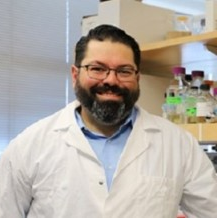Recent Advances in Antimicrobial Agents
A special issue of Biomolecules (ISSN 2218-273X). This special issue belongs to the section "Chemical Biology".
Deadline for manuscript submissions: closed (31 December 2023) | Viewed by 4416
Special Issue Editors
Interests: epigenetics; genomics; bioinformatics; antimicrobials
Interests: biophysical chemistry; antimicrobials; peptide-lipid interactions
Special Issues, Collections and Topics in MDPI journals
Special Issue Information
Dear Colleagues,
In the current healthcare setting, the emergence of antimicrobial-resistant pathogens continues to plague clinicians’ ability to effectively treat microbial infections. Owing to the limited availability of diverse antimicrobial compounds that target only a limited subset of microbial mechanisms, treatment options remain selective. In this Special Issue, we aim to gather articles that utilize diverse chemical compounds and/or aim to target unique microbial mechanisms in order to enhance the understanding of the potential for novel antimicrobial agents. The compilation of articles in this Special Issue will bring together a varied collection of potential new avenues for the development of treatments for microbial pathogens in the clinical setting.
Dr. Benjamin Carone
Dr. Gregory Caputo
Guest Editors
Manuscript Submission Information
Manuscripts should be submitted online at www.mdpi.com by registering and logging in to this website. Once you are registered, click here to go to the submission form. Manuscripts can be submitted until the deadline. All submissions that pass pre-check are peer-reviewed. Accepted papers will be published continuously in the journal (as soon as accepted) and will be listed together on the special issue website. Research articles, review articles as well as short communications are invited. For planned papers, a title and short abstract (about 100 words) can be sent to the Editorial Office for announcement on this website.
Submitted manuscripts should not have been published previously, nor be under consideration for publication elsewhere (except conference proceedings papers). All manuscripts are thoroughly refereed through a single-blind peer-review process. A guide for authors and other relevant information for submission of manuscripts is available on the Instructions for Authors page. Biomolecules is an international peer-reviewed open access monthly journal published by MDPI.
Please visit the Instructions for Authors page before submitting a manuscript. The Article Processing Charge (APC) for publication in this open access journal is 2700 CHF (Swiss Francs). Submitted papers should be well formatted and use good English. Authors may use MDPI's English editing service prior to publication or during author revisions.
Keywords
- antimicrobial agents
- resistance
- biofilm
- antibiotics
- treatment
- infection







